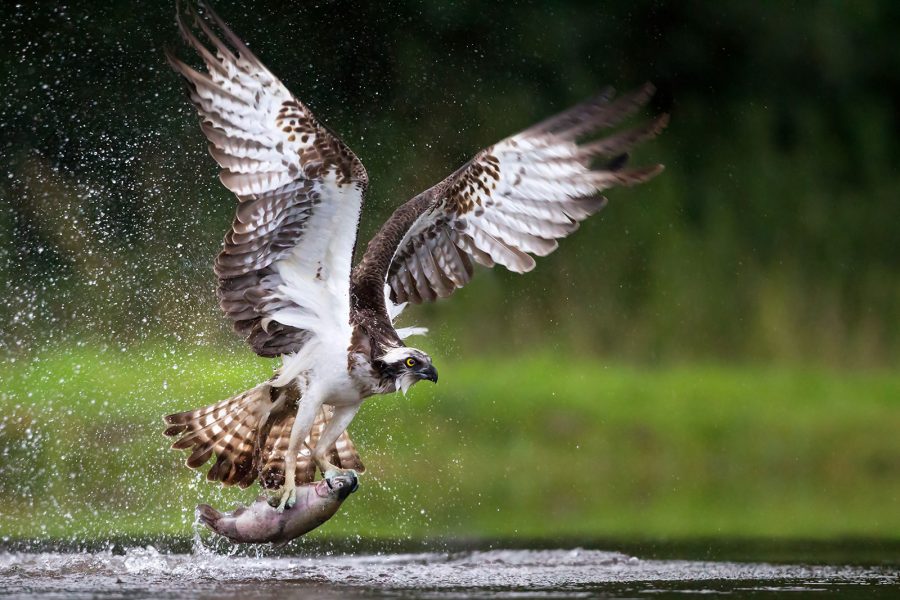What’s the Best Focal Length for Bird Photography?

If you’re looking to explore the world of bird photography, then you are in good company. It’s an incredible popular field of wildlife photography, although that is no surprise considering bird watching is itself an international pastime. However, if you’re looking to arm yourself with the best equipment for the job, you’re probably wondering what the best focal length for bird photography is? Look no further – I have the answer!
Do expensive lenses make a difference?
If you’re shooting with a camera that has interchangeable lenses, I always advocate upgrading your lens as a priority. This is because a camera’s performance is limited by the glass it looks through. For example, if you’re using relatively cheap lenses with poor quality glass then your pictures will suffer for it.
I’m not telling you to go out and spend your life savings on a new lens, though. You have no doubt seen bird photographers with huge $10,000 lenses from Canon, and that can bring about some serious “lens envy.” But don’t worry, having the most expensive equipment never makes you a better photographer than the next person.
It is true that the best quality glass will help you to achieve exceptionally sharp pictures, but if your technique is poor then your lens is not going to fix that. You’ll often hear these big lenses described as being “fast,” and whilst they do typically have fast motors, this is actually describing the amount of light getting through the lens and into the camera.
Confusing terminology, I know. But that “fast lens” will have a wide aperture (low f-stop number, such as f/2.8) which is allowing a lot of light to hit the sensor in your camera. This enables you to increase your shutter speed, which is ideal for bird photography.
Having said that, I still wouldn’t advocate a $10,000 lens.
What’s the best lens for bird photography?
Ok, so now I’ve hopefully addressed the issue with “lens envy,” what do I actually recommend?
First up is the focal length. This will determine how much “reach” you have with your lens, and essentially how big you can make your subject in the frame. Whilst you don’t always want a frame-filling shot, they are nice to get. Particularly if you see a rare or very attractive bird that you want to document properly.
When I started out, I was using the first generation Sigma 150-600mm f/5.6-6.3 lens. The lens is relatively slow – just look at that aperture range. But this meant I was able to develop my technique properly and, consequently, become a better photographer for it.
I learnt how to deal with the limitations of the lens, and even when photographing birds I was able to freeze the action! Sometimes I’d miss a shot, sure, particularly when the light was low on a dull day or late into the evening. But that’s just how it is, and you can’t always win when dealing with kit limitations.
Now, the focal length range of this lens is great. It really helps for composition, and you can adapt your shot for a tiny sparrow all the way up to a huge eagle swooping in to catch a fish.
600mm is great if you’re photographing small passerine birds (blue tits, coal tits, sparrows etc). It allows you to fill the frame and get great close-ups. But, actually, it’s almost a bit overkill. It’s not hard to get up close to passerine birds, and if you are using a crop sensor camera you have even more reach on that lens.
For the last 9 years (wow, time really does fly), I have been using a lens that goes no further than 400mm. In fact, I shot with the Nikon 200-400mm f/4 lens for a long time. This was my prized possession, and it is a really great lens.
Nowadays Nikon have a 200-500mm lens (which I reviewed here) and I thoroughly recommend checking that out if you can afford it. If not, then take a look at the latest Sigma telephoto lenses, or those from Tamron.
Since then I have moved to Canon (because I now work in the film industry, and it is more appropriate for that), and I shoot with the Canon 100-400mm Mark II. For some reason Canon have not priced this lens higher than $2,000, and it is just as sharp as the $10,000 200-400mm lens that they offer. I’m not exaggerating – and it is also compact and lightweight!
You’ll find that a lot of Canon professional wildlife photographers are using the 100-400mm Mark II lens (crucially, the Mark II – the previous generation is not so good) and I cannot recommend that lens enough if you are shooting with Canon gear.
Ultimately, I recommend looking at a 400mm telephoto lens. Don’t go for a prime – you want that flexibility to allow you to compose your shots. Prime lenses are faster, but they are limited for composition. Instead, develop your technique (using the articles below) and work with the slightly smaller aperture of a zoom lens.
More bird photography tips
Now you’ve sorted your lens choice, you should take advantage of the wealth of information on this website. Firstly, register for our free weekly newsletter where we send our latest nature photography tutorials straight to you.
Next up, we have a huge number of free bird photography tutorials and I recommend you start with the following:
Also, be sure to check out our in-depth beginner’s guide to wildlife photography. Good luck!









